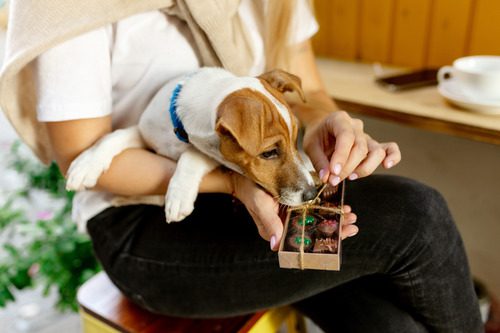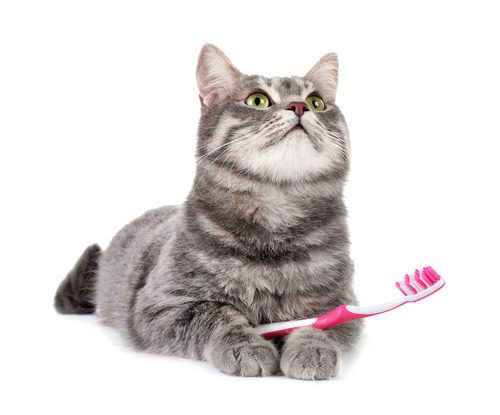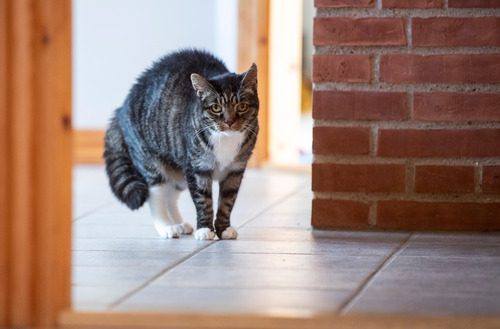Tips for Bringing Home a Cat
Tips for Bringing Home a New Cat

June kicks off Adopt a Cat Month and that fuzzy little kitten or sweet older cat has caught your eye! People have many reasons for choosing to add a feline friend to their home but what we all have in common is wanting to ensure they live a long happy life with us. Here are some important tips and tricks for welcoming that new cat to your home:
What supplies do I need?
- Food and Water Dishes – Ensure you have dedicated food and water bowls for your new cat. Ideally they should be shallow and heavy, this will allow your cat to easily eat and drink from them but will also help prevent accidental spills!
- Food – Choosing a food for your cat is daunting, especially if you haven’t had a cat before. The good news is, you have a lot of options to find what’s right for your lifestyle and your cat’s preferences. Unless your pet has an underlying health condition that requires a specific diet, you can feel free to offer only dry, only canned, or a mix! Find what works best for you, and keep in mind that while cats tend to enjoy canned food, it can only be left out for so long. If you have any specific concerns about ingredients, brands, etc it is easiest to discuss this in detail with your veterinarian.
- Treats – Treats are a critical part of making your pet feel loved and forming a stronger human-animal bond! But when you pick treats, it’s important to pick ones that are lower in calories. You can also consider getting dental chew treats so that you are not only showing your cat love but protecting their perfect smile! To find good dental treats, look for products approved by VOHC and CET.
- Carrier – Most cats won’t walk for us on a leash and collar like a dog, so it’s important to pick a good carrier. This carrier will be used to bring your cat home, take them to the vet, and transport them for a multitude of other reasons! The key to picking a good carrier is size and style! Make sure your carrier is not only big enough for your kitten but will be big enough for your full-grown cat as well! The style of the crate can be soft (made of cloth) or hard (made of plastic). While the soft ones can seem more comfortable for your cat, they can be harder to clean if there is ever an accidental mess and can be harder to get your cat in/out of if they are stressed.
- Litter box and litter – Your new cat will need somewhere to go to the bathroom and just like we all have preferences for our bathroom, it’s important to remember cats can be quite picky about their litter box and litter too! Keep this in mind when considering open vs closed litter boxes, self-cleaning litter boxes and dust-free litter, yesterday’s news, scented litter, etc.
- Toys – Toys galore! There are so many options from feathered string toys to racing mice to lasers. Figuring out what excites your new cat will take time and trial and error but don’t be deterred! Playtime is healthy for your cat and a great bonding opportunity.
- Cat trees, Houses, and Beds, Oh my! – It’s always important to make sure you give your new cat a place to relax or hide to minimize stress. This can be in the form of a bed, a cat house, or a cat tree!
- Scratching Post – Cats can cause a significant amount of damage when they scratch your furniture or carpets. In order to prevent this and give your cat a healthy scratching outlet, it’s important to provide some form of scratching post or toy. Explore the various options to find what fits your home best!
- Other:
- Nail trimmers: Some owners feel confident clipping their cat’s nails at home however if that’s not something you’re prepared to handle you can always schedule a visit with your veterinarian!
- Brush: For cats with longer fur it is recommended to get a good brush and use it regularly. Cats with luxurious fur are beautiful, but if we don’t keep up with grooming they can quickly become matted which can be a serious health concern.
How can I prepare my home for my new feline companion?
When you’re introducing a new cat to your home, we have to try to see the experience from their perspective. This is a new environment with new housemates they may not understand. For this reason, we need to do everything we can to minimize stress! Minimizing stress for cats can be done in a few simple ways:
- Increase access to resources by having multiple food and water locations in different parts of the house
- Ensure you have one litter box per cat in your house plus an extra. This means if you have two cats, you should have three litter boxes spread throughout your house. This minimizes stress from forced housemate interactions at potty time.
- Consider Feliway, a natural pheromone that comes as a diffuser or a spray that can be used in certain areas of your home. Be aware though, this spray is meant to be used as a perfume – do not spray it excessively or it can be nauseating!
- Lastly, always ensure your cat has access to a safe space where they can go when they need a break. We all need alone time sometimes, and your new cat will be no different.
We hope you found this information helpful as you go through the exciting steps of adopting a new cat into your family. However, we recognize that no single blog could ever cover every situation you might face with a new pet, so for more information, our staff at Heart + Paw is only a click or phone call away!
Dr. Ashley Klein, Associate Veterinarian
Dr. Klein is one of Heart + Paw’s newest Associate Veterinarians who works out of both our Glen Mills and King of Prussia centers. Dr. Klein grew up in Clinton, NJ with her two brothers and Jack Russell Terrier, Sasha. After working at the Woodlands Wildlife Refuge in Pittstown for two years, it became clear that she wanted to be a veterinarian. She attended the University of Maryland, College Park with a major in Animal Sciences and then went on to obtain a degree in Veterinary Medicine from the University of Pennsylvania. Dr. Klein is passionate about internal medicine and dermatology. She strives to make sure owners can leave the hospital with a clear understanding of their pet’s health plan. Dr. Klein is Fear Free certified and uses techniques from her training to make each visit less stressful for both the pet parent and pet. She is looking forward to working with the Glen Mills and King of Prussia teams and ensuring a longer and healthier life for pets.
Recent Posts
Can Dogs Eat Ham?
Ham is a popular meat found on many dinner tables, especially during the holidays. As a dog…
8 Signs and Symptoms of Diabetes in Dogs
Caring for a dog means being tuned in to the subtle changes that can reveal their overall…
Why Dogs Can’t Eat Chocolate and Tips for Keeping This Sweet Treat Out of Their Reach
Chocolate is a beloved indulgence for us, but for our dogs, it’s a hidden danger that can…
Why Cat Teeth Cleaning is Important For Your Pet’s Health
As a cat owner, you know how important it is to care for your feline friend’s overall…
Cat Body Language: A Guide To Understand What Your Cat is Telling You
Imagine trying to communicate without words, relying solely on subtle gestures, glances, and movements. This is how…
About Us
Heart + Paw was founded in 2018 by Chief Veterinary Officer Dr. George Melillo, who currently serves the Mid-Atlantic area. Heart + Paw offers a combination of veterinary care, pet grooming, and dog daycare to help be a resource in your pet parenthood journey.
We'd Love to Meet Your Four-Legged Friends
Find out how the friendly veterinary team at your local Heart + Paw can help your pets live longer, healthier lives by searching for a location near you.





